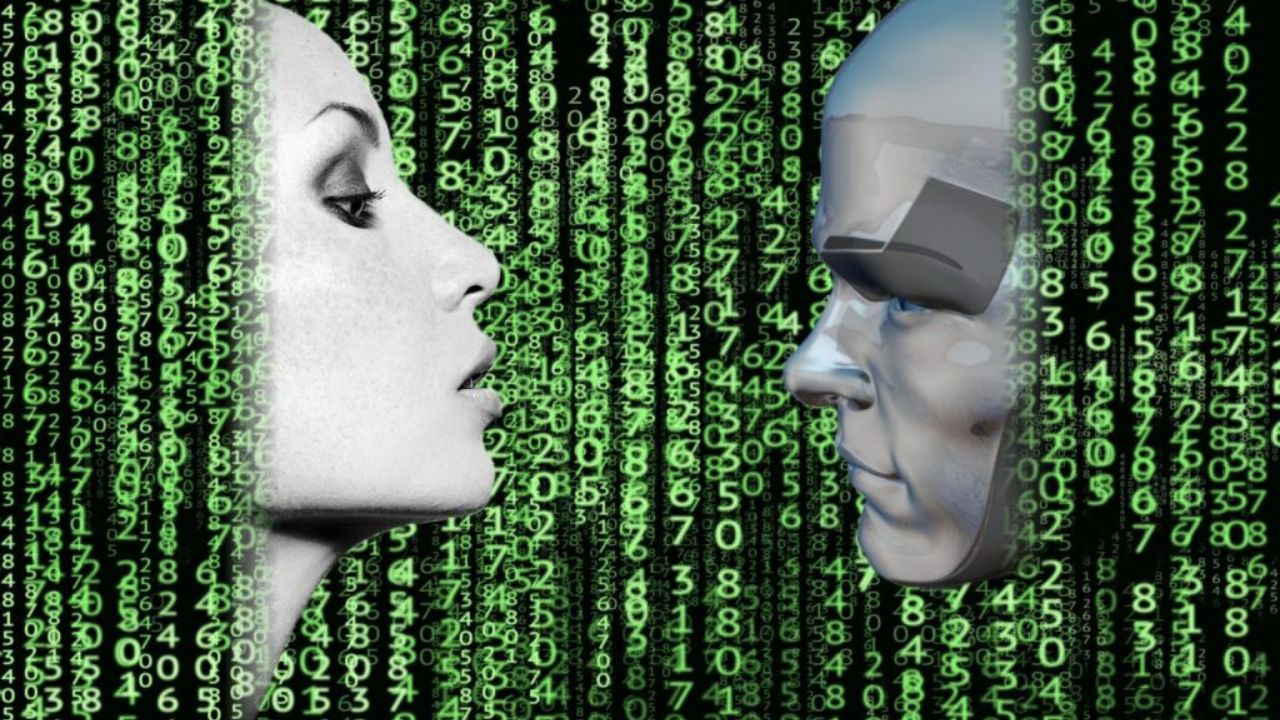
The Dangers Of Deepfakes: A Potential Misinformation
Plant pots are flying in the South-East London neighborhood of sunny Catford as Idris Elba and Kim Kardashian dispute over their terrace homes’ shared yard. Youth worker Olivia Colman and her mature student husband Jay-Z live on the Isle of Wight and enjoy line dancing with their cat, Cabbage, but not with their snobbish neighbor, estate agent Tom Hiddleston.
While Adele, a newly single caretaker who recently moved to a Coventry semi, dislikes how the pigeons are ruining the garden accessories she loves buying from the Shopping Channel, trainee nurse Andy Murray and his mother, a heavily tattooed Lorraine Kelly, have boundary issues over neighbor RuPaul’s noisy cockerel in their sleepy Cotswold village.
All of this may sound like the makings of a long suburban nightmare, but that is exactly the point of a new ITV comedy series, the first of its kind in the world. With the aid of cutting-edge “deepfake” technology, Deep Fake Neighbour Wars places famous people in unimaginably less glamorous settings where they have menial jobs and live in standard houses. The program consists of a number of lengthy comedic routines in which actors portraying famous people’s voices and mannerisms have their faces digitally grafted onto them.
The ensemble actually looks like these celebs, even though they don’t often sound exactly like them, which is striking and disturbing at first. Deepfake’s potential is producing fevered excitement in the entertainment business, but it’s also raising anxiety among lawmakers and security experts who see the risk in a tool that can make it appear as though anyone has said or done anything, especially in the context of distributing fake news. It might even be used by hostile nations or others with bad motives to undercut democratic institutions and public safety.
What might happen, for example, if a world leader threatened another nation or disparaged an ally in a video that appeared the night before a general election instead of Idris Elba’s outburst with a neighbor? Or perhaps a police chief uttering a blatantly racist statement after a black man has just been killed. Suddenly, it isn’t even remotely amusing. Some fear that the development of deepfake software, which is becoming incredibly powerful and pervasive to the point where it can be downloaded 카지노사이트 주소 on a cell phone, may cause significant social disruption and potentially the “end of truth.” We might soon not be able to trust our eyes, ears, or even each other in a world that is becoming more and more divided, making it already difficult to agree on anything.
What if, instead of Idris Elba’s outburst with a neighbor, a foreign leader made threats against another country or disparaged an ally in a video that surfaced the night before a general election? Or possibly a police chief making an obviously racist remark following the murder of a black man. All of a sudden, it’s not even remotely funny. Some worry that the rise of deepfake software, which is now so strong and widespread that it can be downloaded into a cell phone, would significantly destabilize society and possibly lead to the “end of truth.”
In a society that is already increasingly polarized and becoming more so, it may not be long until we can no longer rely on our eyes, ears, or even one another. A year later, Fisher began posting videos on his own TikTok account. His first video, in which he plays golf as Cruise, amassed four million views in less than two days, while in another, his ‘DeepTomCruise’ cuddles the real London Hilton Fisher’s videos served as an introduction for many people to what deepfake software is capable of. Even though the use of their photos in Deep Fake Neighbour Wars is allowed, none of the celebrities parodied in the ITV series were asked for or granted permission (not yet anyway). There is nothing to stop edited excerpts of the show from being posted on social media without any such warning, even though the show begins each episode with an on-screen disclaimer that what follows is “all phony” and “the actual celebs have had nothing to do with this.”
Although it is said that none of the “real celebs” have objected, the actors union Equity has expressed concerns about the “dystopian” repercussions for performers who aren’t compensated or even consulted if their faces are used for deepfaking, even going so far as to launch a Stop AI Stealing The Show campaign. A deepfake video or image frequently features the face of one person superimposed over the body of another. Although it may seem straightforward, it takes a lot of effort to fool the human eye by matching up facial tics, movements, and even expressions. Deepfakes are typically produced by feeding a computer software inside a special camera with thousands of shots of a subject (famous individuals are easier to fake because there are so many more pictures of them available).
By combining data from all the photographs, this technique employs “machine learning,” a type of artificial intelligence (AI) in which the computer learns for itself, to predict how that person would seem from other perspectives. The actor who serves as the stand-in for the sake of the fake can then have a replica of the person’s face superimposed on his or her own. The software needs to understand how people’s mouths, faces, and even necks move when pronouncing words if you want them to utter things they’ve never said before. Inexperienced deepfakes are frequently easy to identify by glancing at the mouth.
Ideally, the stand-in should move as slowly as feasible. Quick movements, intense emotions, and covering up a portion of the face, like with sunglasses, can all interfere with the process. Even so, these problems are being resolved. GAN, or Generative Adversarial Networks, is a more sophisticated variant of the deepfake program that employs two competing AI algorithms, one of which is used to create the deepfake and the other to try and detect it. They will gradually refine the deepfake image through trial and error to create something that is quite similar to the original.
While simple deepfake software is available for free download for mobile devices, significant post-production effort is always required to remove minute imperfections that a computer using statistical measurements may detect but the human eye will not. It is also possible to deep-fake audio to produce so-called “voice clones,” either using voice-impersonation software or by stringing together the words the impersonator actually pronounced.
Although it prefers to refer to it as “synthetic media,” the film and television industries have been experimenting with deepfake technology for some time. It has been used to “resurrect” dead actors like Peter Cushing in the later Star Wars films, to cast Bruce Willis in a Russian advertisement, and to have the Queen dance in Channel 4’s offensive 2020 parody of HM’s Christmas Speech. Deep imitations of Simon Cowell and Elvis Presley were included in the America’s Got Talent season finale. The same business, Metaphysic, who created the Tom Cruise films, has just revealed that actors Tom Hanks and Robin Wright will undergo the deepfake procedure, “seamlessly changing into younger versions of themselves,” in a forthcoming feature film.
Meanwhile, the Deepfake revolution has already demonstrated that it can be used for much darker purposes than impersonating famous people or pulling off a little time-travelling magic in movies. In fact, the creator of sex films with actors’ features exchanged for actresses’ faces first used the word in 2017 on the social media forum Reddit. It is still used for despicable purposes, such as to feed so-called “revenge porn” (in which regular people can be made to appear to be having sex).
An especially unsettling deepfake internet tool can replace the subject’s clothing in a picture with a convincing nude body. Of its 100,000+ victims, many of them were young girls. Criminals are thought to have impersonated the voice of the top executive of a German energy company’s UK unit in 2019 using deepfake technology. The con artists duly phoned one of the CEO’s subordinates and gave him the instruction to transfer almost £200,000. In a bank robbery in Dubai, a similar voice-cloning scheme reportedly brought in £29 million for the culprits. And just a few days ago, Emma Watson, the Harry Potter heroine, was caught on camera reading aloud from Hitler’s Mein Kampf.
From Joe Biden falling asleep in an interview to Barack Obama referring to Donald Trump as a “total dip****,” Deepfake has been utilized in political hoaxes. Social media was flooded with a video depicting the head of Ukraine, Volodymyr Zelensky, submitting to Russia last year. Security experts claimed that although it was of poor quality, it indicated what might be tried. Malicious deepfakes, according to some American legislators who want to criminalize them, are a problem that keeps intelligence services up at night. Deepfakes can be specifically designed to divide Americans and fuel any ongoing culture war, as one U.S. lawmaker put it.
It could result in false accusations against the innocent in policing, while those who are guilty could always claim that real incriminating video is fake. In 2020, it came to light that a deep-fake audio recording had been used in a UK custody dispute to discredit the father by claiming he had threatened his wife violently. It would be inaccurate to claim that technology has only brought bad news to sectors other than entertainment. Last year, Dutch police used it to reopen a 2003 cold case by digitally reconstructing the murder victim, who was 13 at the time. It allows online consumers to try on clothing in virtual changing rooms. While this is going on, it can be seen in public service announcements like the Malaria Must Die campaign’s videos, which featured David Beckham speaking
Experts, however, assert that Deepfake has pressing and major ethical problems. According to Mathilde Pavis, an internet law specialist and deepfake expert at Reading University, “we should be very alarmed” given the wide range of fields that could be exploited, including diplomacy, national security, business, and politics. The issue “needs a global response that is seriously missing.”
It’s too late to try to completely outlaw deepfakes and perhaps even restrict the malevolent ones, according to experts. They contend that we should instead educate ourselves about technology and be aware of potential deepfake tricks. It might be difficult. When the genuine Paris Hilton questions whether or not people will think they are a couple, the deep fake Tom Cruise responds, “I think most people will believe anything.”


I really appreciate this wonderful post that you have provided for us. I assure this would be beneficial for most of the people. 먹튀검증
I truly thank you for the profitable information on this awesome subject and anticipate more incredible posts. 카지노사이트넷
That’s why marketing and advertising that you simply applicable exploration previous to publishing. 카지노사이트킴
They provide a great deal of self-management tools to the players to manage their
gambling practices.
Also visit my page slots that pay real money